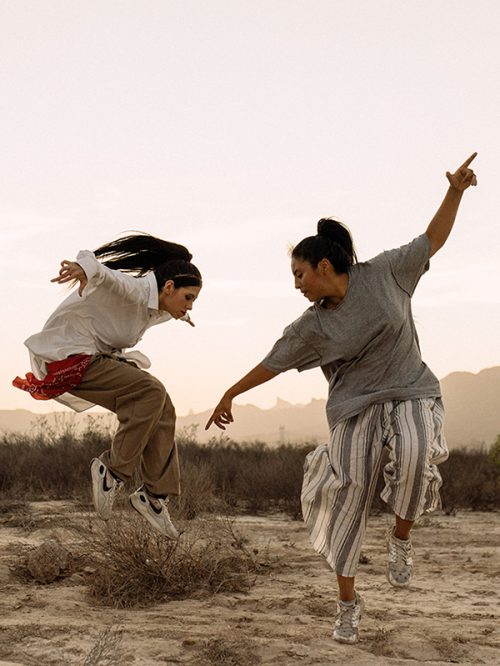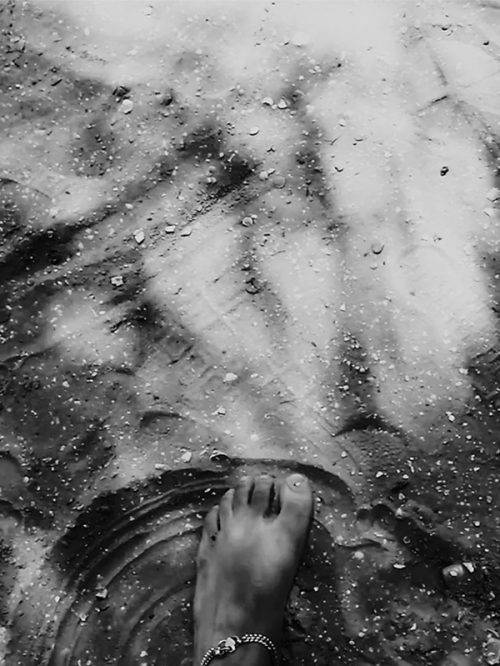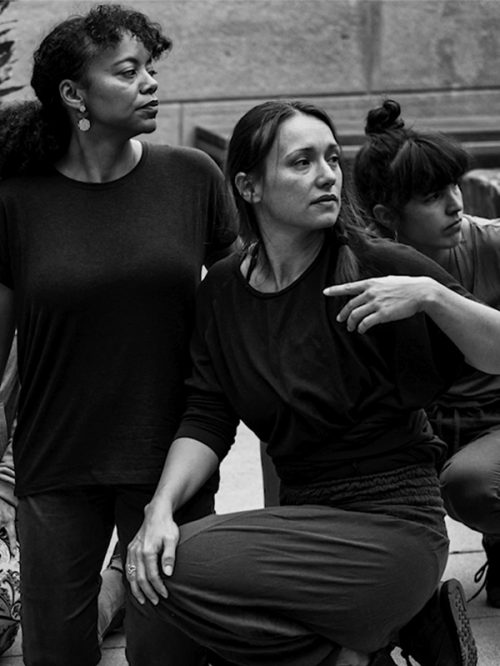Return to Territory
As a child of Peruvians in diaspora, I come from a lineage of people who chose to step into the unknown. They fled poverty and socio-economic chaos. Having lost all hope that their government systems would care for their lives and their families’ futures, they left convinced that suffering or early death is worth the hope that their descendants would have a better life. They got tired of waiting for a revolution, bound to be violently repressed.
Not all migrants are the same. I recognize that my grandparents and mother were among those who had economic means. They applied for a Visa and took an airplane to leave the sinking ship that was Peru in the mid-1980’s, part of a mass exodus of Peru’s middle class. They were far from the ruling class in their homeland, but they were also comfortably separate from the most destitute. Peru is a context where marginalities continue to emerge in more and more desperate circumstances with each overthrown government. It is a territory where displaced and territory-less peoples feel the brunt of a nation-state willing to sacrifice them for the bottom line.
Unlike my great-uncle who was beaten and imprisoned during the Socialist student and worker uprisings in Lima between 1932-1945, my other family members were unwilling to die for their ideological beliefs. When survival is of utmost importance, the system has already won, divided, and conquered communities and families. My father’s story is vastly different and will remain unwritten. There is dignity in silence and unanswered questions.
I was brought to suburban Los Angeles, California, the unceded indigenous territories now known as the United States. By age four, I consciously participated in stripping myself of all familial identities and ties in order to pass through school systems. I danced ballet from a young age, my mother’s American dream, where both informal and studio dance training shaped my body and mind. Exceptionalism led to family/cultural separation and indoctrination into a belief system that celebrates the idea of the “American,” the genius choreographer performing a twisted “democracy” where a singular figure controls and manipulates dancers like objects and changes the dominant history of dance by appropriating all sorts of cultural heritage from so-called primitive peoples.
Eurocentric-U.S. American dance and its exported influence on the global market is like a grandparent that today’s international contemporary dancers either choose to ignore, make fun of, or continue to uphold. A few might even feel a bit embarrassed by it. Wouldn’t we all love to ignore contradictory complications? But they are why we have a concert stage to perform on, whether we choose to make dances on it or not. They are the reason we have a career; however precarious this may seem today. This means that it’s up to us, the contemporary dancers of today, to make work in a way that goes beyond the binary of elitist art vs. commercial entertainment and aims to contribute towards strategies of resistance and collective survival. We are not working within a purely theoretical form. Dance is about the remembering body in all forms of presence and absence.
On the dance stage as a college student is where my resistance began. Maybe it’s the spirit of my great uncle passing through my body, which sends alarm bells whenever it feels its freedom repressed. My dance wants to spring forth from ancestral knowing and relationship-building between the varied cultural experiences of my ongoing education. In contrast, my bachelor education was one of repeated gaslighting and silencing, forced to pay for a critique-less curriculum with the promise of employability, upholding a culture of scarcity, hegemonic structures, and blind obedience. I remember sometimes wishing that I could just shut up and accept it, but my guts would not let me.
I thought I could find answers to my questions by returning to the motherland. I made trips back to Peru starting in 2004 and lived in Lima between 2010-14. As I was born there, I have access to documentation like any other Peruvian-born person, a privilege not afforded to other migrating bodies. I arrived in Peru as a person with an education from the United States. With just a few years of professional dance trajectory, I was selected over my locally-educated peers to represent them on stages and in front of classrooms. This social mobilization not afforded to my biological kin was something that I did not reflect upon until many years later in the study of white supremacy culture and white power. Despite my resistance, I had learned to dance white and perform whiteness, and I was rewarded for it.
My mother is a dancer who studied and performed several of Peru’s most popular traditional dances from the perspective of the urban capital. Because of her skin color and appearance, as a child, she was not accepted into European traditional dance schools in Lima. Peru is a country of over 5000 dances. Coming from a territory named nation-state which assembles diverse indigenous and Afro-descendant cultures, languages, and ethnicities without a commitment to supporting these contemporary manifestations beyond their benefit to the tourism economy, I have frequently asked myself, what does it mean to be a Peruvian dancer, living in diaspora, dancing ballet and modern dance?
I dance because my mother introduced me to the language of physical body expression and creativity. She is the one who took me to ballet lessons, encouraged me to dream bigger than the US public school systems could offer me. This inevitably came with guilt as I also saw both of my parents work 16-hour shifts in service and care-oriented labor. Their overworking makes my overworking part of a repeated pattern, trying to earn back our humanity stripped by racialization through hard work.
Over the past years, I beat myself up over my accomplishments, as if they are privileges and not hard won. I was raised to aspire to US American whiteness. To improve myself and therefore not repeat my parents’ narratives. During my dance training, I inflicted eating disorders upon my teenage body. I over-exercised. I tried so hard to fulfill some out-of-reach idea of what my body should look like, move like, and in the end, I realized that I was missing the joyful curiosity I experienced before entering arts education institutions.
This mentality recreates the same power dynamics I suffered abuse from. As the Afro-Peruvian theater artist, Victoria Santa Cruz frequently said, the enemy lives at home. Too easily does the oppressed become the oppressor of both themselves and others. I recognize that, when I lived in Peru, I also arrived with white ideas of professionalism, and I taught these to my students, asked them to uphold the same ideals that I was subject to. I did this without enough reflection.
Now, I see my mistakes. How do I apologize for this? Perhaps writing this is part of that process. Perhaps I had become another colonizer? As a foreigner, an extranjero, not from genetics, but from a cultural education built from white supremacist structures. My entrance into a community and thoughtless taking of the opportunities I found was in some cases inappropriate. Stepping back was perhaps the best option, to stop and reconsider.
Reentering imperialist, racist, white supremacist-led territories such as the United States, and now having entered a complex economic superpower, Germany, I deal with my multiple identities and learn both dominant and subversive narratives relative to this geographic shift. My identities continue to evolve. I understand myself as U.S. American and diasporic, Peruvian and 1.5 generation, and everyday, a bit more German too.
Skipping to today, I am preparing myself for a trip back to Peru. I have considered more deeply the intentionality of my presence. What could be a non-extractivist way to learn, research, and meet new communities? What does it mean to be, as dancer Suzette Sagisi says, a gracious guest? I dance with these questions.
For this trip, I will be led by Cynthia Paniagua, another Peruvian dancer raised, educated, and living in the diaspora. She is piloting a program called, “Dance Your Ancestors,” guiding myself and other Peruvians in diaspora to “get your birthright.” These are concepts that I am attracted to, but also have some difficulties with. What is my birthright? What do I have rights to in terms of cultural heritage?
I am a descendent of Andean and Coastal (Limeñan) mestizos. Mestizo is a nice word for mixed-race peoples. Like the development and political utilization of race in Mexico, Peru pushed for nation-state building using the concept of mestizaje and thus repressed indigenous identity and invisibilized Afro-Peruvian descendants. I am highly uninterested in defining myself racially like one would classify a dog, sheep, or horse. I am not an object for further breeding and use to its owner or master. I believe that a personal process of decolonization requires a rejection of biological ideas of race and identity because in that game, whiter is always better.
Through my experiences working as a professional dancer dealing with themes of representation and frustrated by experiences of discrimination, I cannot avoid my brownness. Even if I wanted to forget, I am reminded by instituitional structures, daily on the street and more hurtfully, by my white peers, over and over again. Through my movement practices, I also recognize the hegemonic ways I have been taught to think about my body and its expression. This is a form of embodied whiteness: controlled hips, eliminating movements that could be considered obscene, limiting emotional expressivity, emphasizing athleticism and virtuosic physical capacity, and a celebration of intellectual, conceptual contortionism which can be written down and academically understood.
Pursuing my curiosity and individual interest, l find myself pulled towards the dance and musical traditions and practices of my ancestors and peers in Peru. But, with all my research and training and the work I do in order to make a living within white structures, how can I interrupt my whiteness in action? What rehearsals need to take place? What key thought processes can help me to avoid acting again as a colonizer, as an oppressor, or as a tourist who takes and does not remember to give back?
For this, I must remember that dance was never meant to be a marketable good which can be bought and sold. In today’s capitalist structure, those of us who dance (for a living?) sell our dances and our bodies and the images they produce. For people who make a living dancing in Peru, we sell our dances as tourist or theater attractions designed for the delight of white guests. But as said, dance is not only spectacle or entertainment. When I engage as a dancer, learn, and share and participate in the same dance forms which are utilized for tourist spectacle, there are complications. Is my own gaze and imagination already corrupted?
I cannot control the world around me, but I can focus inwards on my internal process. Am I going to expect teachers in Peru to use the same methodologies my peers use in Germany? Why would I? How will I be a gracious guest? Can I drop my expectations from another continent?
Peruvian cultural heritage is not my birthright. It is not my right because it is not mine, nor does it belong to anyone else. Dance was never meant to have an owner. As Cristina López Suárez recently told me during a residency with NAKA Dance Theater, we are only caretakers or custodians of cultural heritage. There is a transmission process, passed down through oral and movement traditions, human to human, generation to generation.
I travel to Peru to ask for permission and learn how to be a better cultural bearer. I want to share with my communities living in Diaspora, with my colleagues and students in Germany who wish to earnestly learn about a tradition, not to become more marketable dancers, to culturally appropriate or to steal, but to share in this collective act of care. I return to territory with an open heart, ready to be transformed, ready to learn and unlearn, ready to connect with my ancestors. I know that they are guiding me in my return.
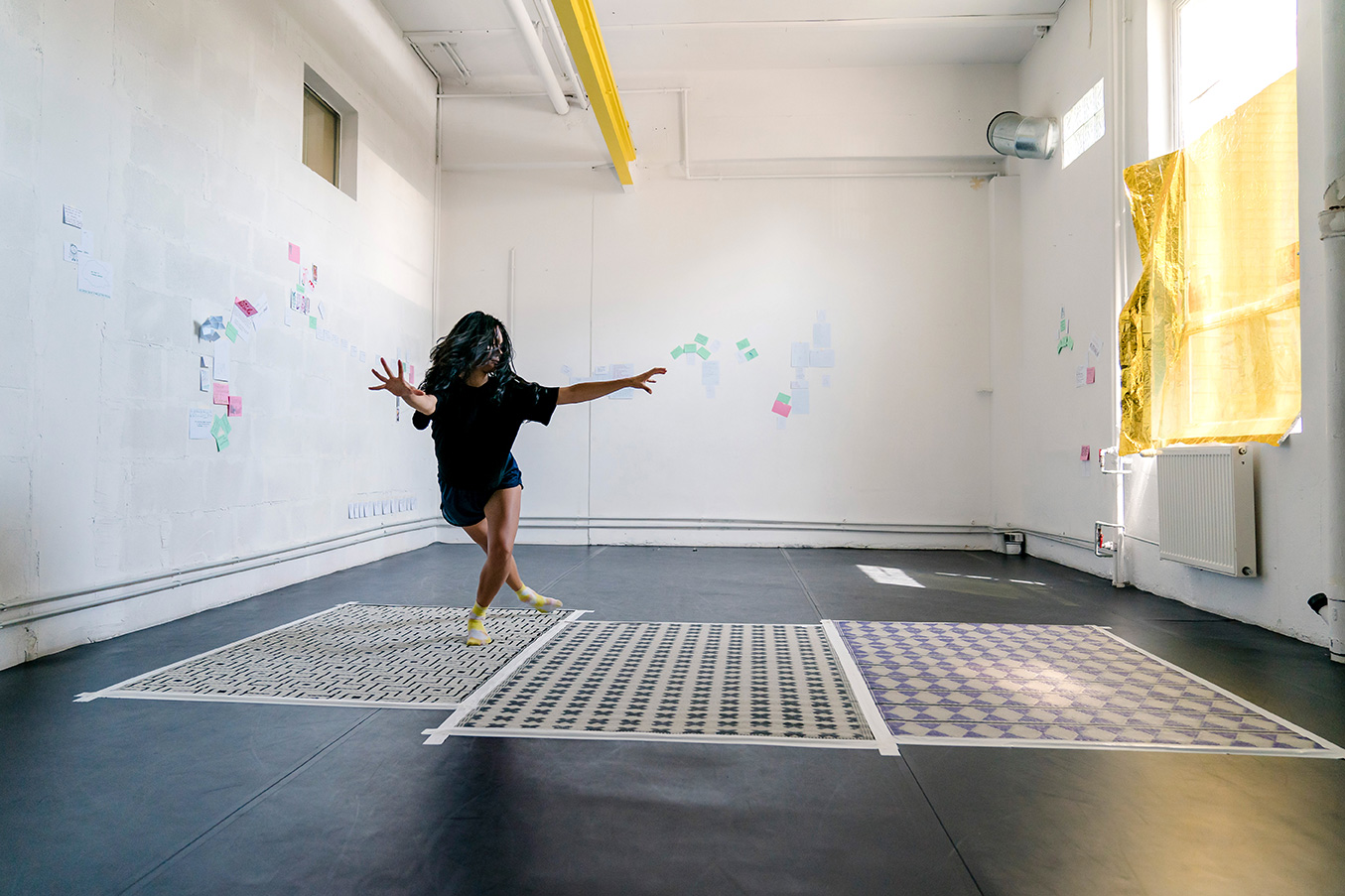
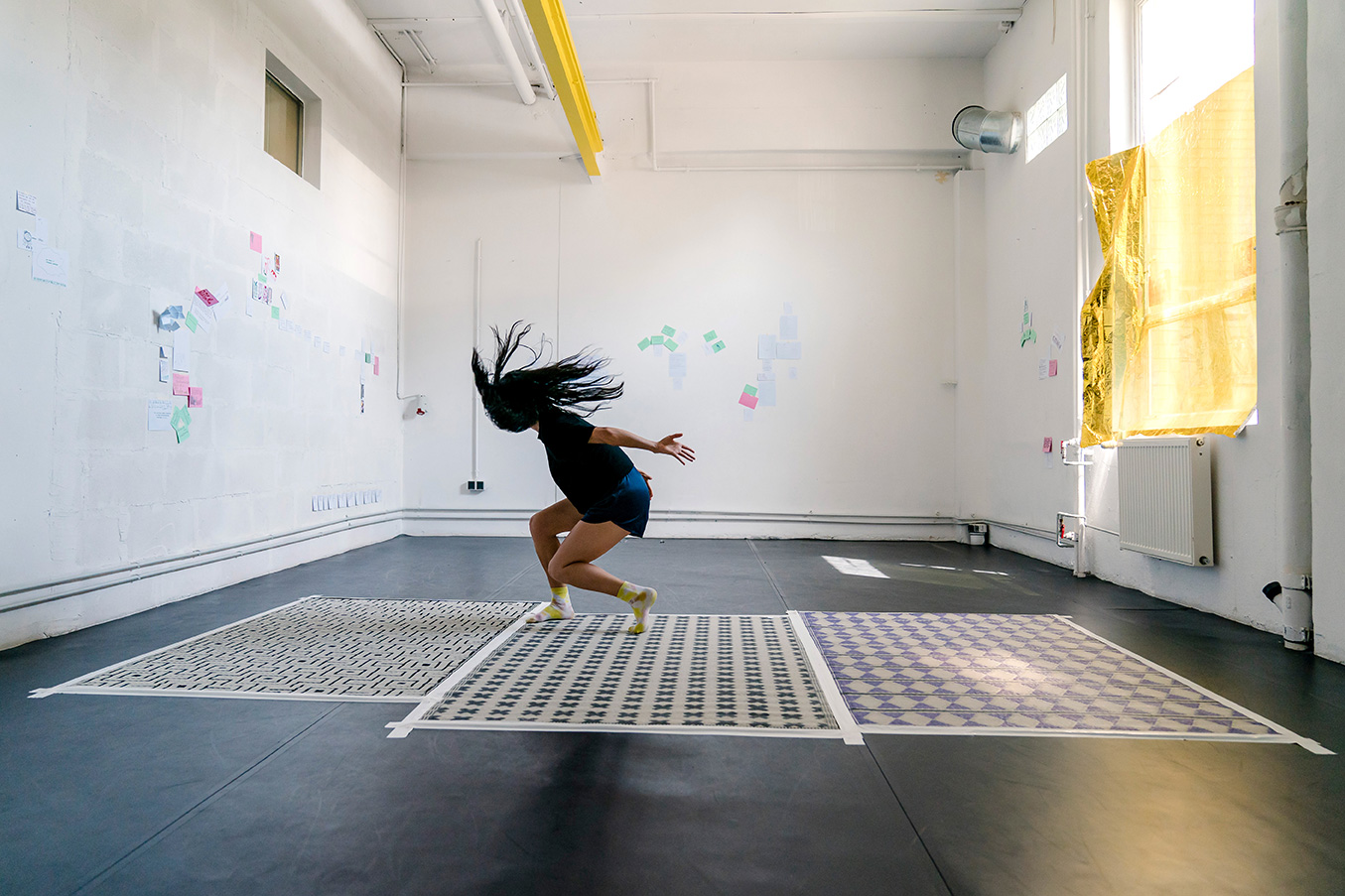




Suggested Citation
Uzategui Bonilla, Amelia. 2022. “Return to Territory“ In: Moving Interventions 2: Between Non-cooperation and Community-building Practices of Resilience in dance – through dance – because of dance, December 2022. Edited by / Herausgegeben von: Sarah Bergh and Sandra Chatterjee, with Ariadne Jacoby (CHAKKARs – Moving Interventions), translated by: Sandra Chatterjee, copyedited by: … . Published by /veröffentlicht von CHAKKARs – Moving Interventions.
About the author
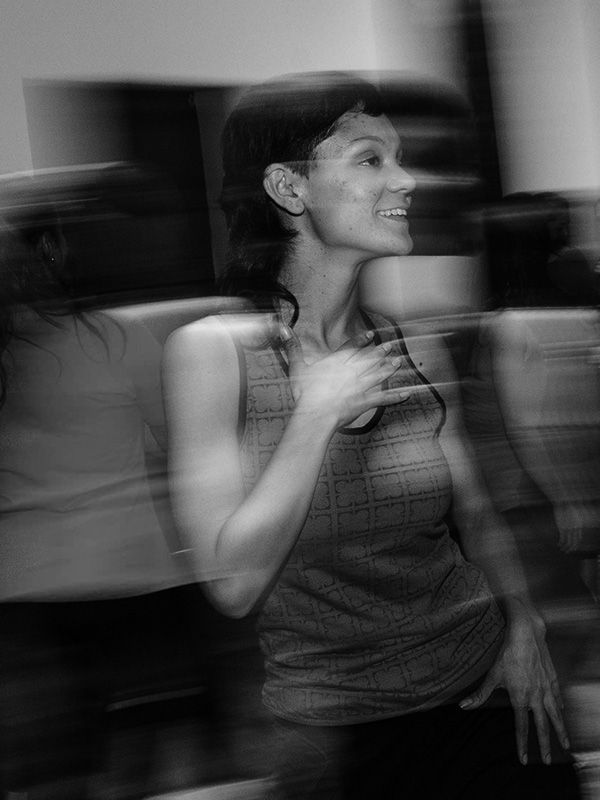
Amelia Uzategui Bonilla
Frankfurt



